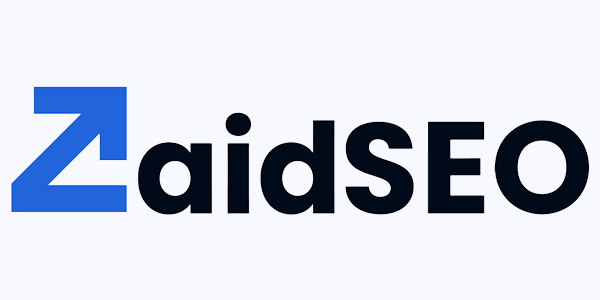When users encounter broken links or inaccessible content on your website, it creates frustration and sends negative signals to search engines. Understanding and properly managing 4xx errors is crucial for maintaining your site’s SEO health and user experience, particularly for large websites with numerous pages.
This guide explains all types of 4xx status codes, their meanings, and their specific impacts on your SEO performance.
What are 4xx Status Codes?
4xx status codes indicate client-side errors, meaning the request made by the browser or search engine crawler cannot be fulfilled due to an issue with the request itself. Unlike 3xx status codes, these errors suggest that the requested resource cannot be accessed or does not exist.
List of All 4xx Status Codes
| HTTP Status Code | Name | Description |
|---|---|---|
| 400 | Bad Request | The server cannot process the request due to client error (malformed request syntax). |
| 401 | Unauthorized | Authentication is required to access the requested resource. |
| 402 | Payment Required | The requested resource requires payment (rarely used). |
| 403 | Forbidden | Server understood the request but refuses to authorize it. |
| 404 | Not Found | The requested resource could not be found on the server. |
| 405 | Method Not Allowed | The request method is not supported for the requested resource. |
| 406 | Not Acceptable | The requested resource cannot generate content according to the Accept headers. |
| 407 | Proxy Authentication Required | Authentication with the proxy is required. |
| 408 | Request Timeout | The server timed out waiting for the request. |
| 409 | Conflict | The request could not be completed due to a conflict with the current state of the resource. |
| 410 | Gone | The resource is no longer available and will not be available again. |
| 411 | Length Required | The request did not specify the length of its content. |
| 412 | Precondition Failed | Server does not meet one of the preconditions the requester put on the request. |
| 413 | Payload Too Large | The request entity is larger than limits defined by server. |
| 414 | URI Too Long | The URI requested by the client is longer than the server is willing to interpret. |
| 415 | Unsupported Media Type | The media format of the requested data is not supported by the server. |
| 416 | Range Not Satisfiable | The range specified in the Range header cannot be fulfilled. |
| 417 | Expectation Failed | The expectation indicated in the Expect request header cannot be met. |
| 429 | Too Many Requests | The user has sent too many requests in a given amount of time. |
| 451 | Unavailable For Legal Reasons | The resource is unavailable due to legal reasons. |
Common 4xx Status Codes and Their Impact on SEO
404 Not Found
Indicates that the requested resource could not be found on the server.
Example: A user clicks on a link to domain.com/page, but that page has been deleted or never existed.
Impact on SEO:
- Damages user experience and increases bounce rates
- Wastes crawl budget as search engines spend time on non-existent pages
- Dilutes link equity when external sites link to 404 pages
- Can lead to removal of pages from search engine indices if persistent
Best Practices:
- Implement custom 404 pages with navigation options
- Set up Google Search Console to monitor 404 errors
- Implement 301 redirects for important pages that have been moved
- Regularly audit your site for broken links and fix them
410 Gone
Indicates that the resource has been intentionally removed and will not be available again.
Example: An outdated product page that has been permanently discontinued.
Impact on SEO:
- Signals to search engines to remove the page from their index more quickly than a 404
- More definitive than a 404, which might be recrawled multiple times
- Helps preserve crawl budget by preventing repeated attempts to access removed content
- Appropriate for content that will never return
403 Forbidden
Indicates that the server understood the request but refuses to authorize it.
Example: A user tries to access restricted content like an admin area without proper credentials.
Impact on SEO:
- Can prevent search engines from indexing important content if misconfigured
- May indicate security issues if appearing unexpectedly
- Reduces crawlability of your site if critical resources are blocked
429 Too Many Requests
Indicates that the user or crawler has sent too many requests in a given amount of time.
Example: When your server rate-limits aggressive crawlers or potential security threats.
Impact on SEO:
- Can block search engine crawlers if configured incorrectly
- May prevent proper indexing of your site if persistent
- Important for protecting your server but requires careful implementation
How to Find and Fix 4xx Errors
- Use Google Search Console: Check the Coverage report to identify 404 and other error pages.
- Run Regular Site Audits: Use tools like Screaming Frog or Semrush to identify broken links.
- Check Server Logs: Review your server logs for patterns of 4xx errors.
- Implement Proper Solutions:
- Create 301 redirects for moved content
- Use 410 status for permanently removed content
- Fix broken internal links
- Reach out to external sites linking to broken pages
- Update your XML sitemap to remove error pages
SEO Impact of Handling 4xx Errors Properly
- Improved user experience and reduced bounce rates
- Better crawl efficiency and indexation
- Preserved link equity from internal and external links
- Maintained search rankings and organic traffic
- Enhanced site reliability and professionalism
Commonly Asked Questions
How do 4xx errors differ from 3xx redirects? While 3xx status codes direct users and search engines to alternative locations for content, 4xx errors indicate that the requested resource cannot be accessed at all, either because it doesn’t exist (404) or is restricted (403).
How quickly should I fix 404 errors? High-priority 404 errors (those affecting important pages or receiving significant traffic/links) should be addressed immediately. Lower-priority errors should be fixed within 1-2 weeks.
Should I always redirect a 404 page? No. Only redirect 404 pages when you have a relevant alternative destination. Redirecting to irrelevant content creates a poor user experience and may be considered soft 404s by search engines.
What’s the difference between soft 404s and regular 404s? A soft 404 occurs when a page returns a 200 OK status code but actually contains a “not found” message. These are problematic because they confuse search engines and waste crawl budget.
How do I prioritize which 4xx errors to fix first? Focus first on pages that:
- Receive external backlinks
- Have significant organic traffic history
- Are critical to user journeys or conversions
- Appear in your XML sitemap


